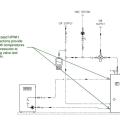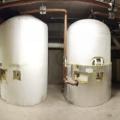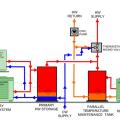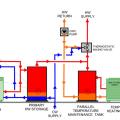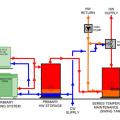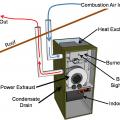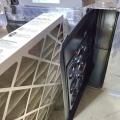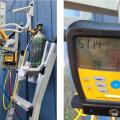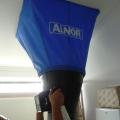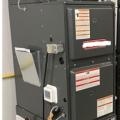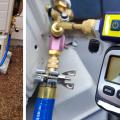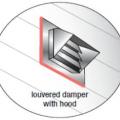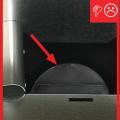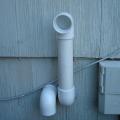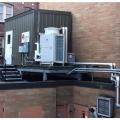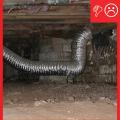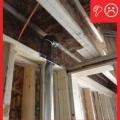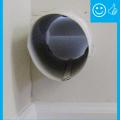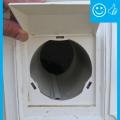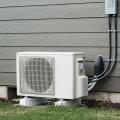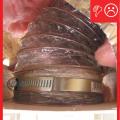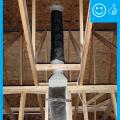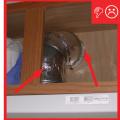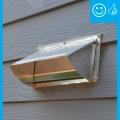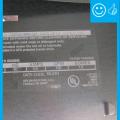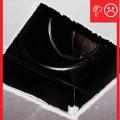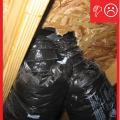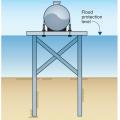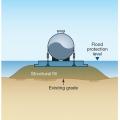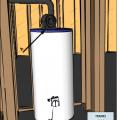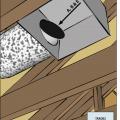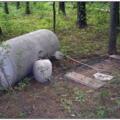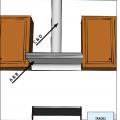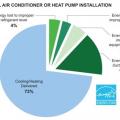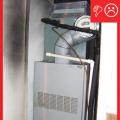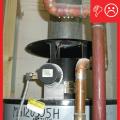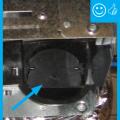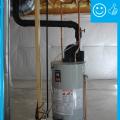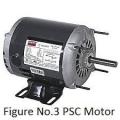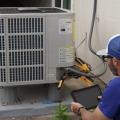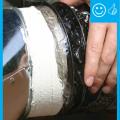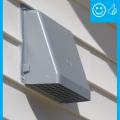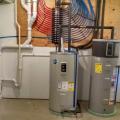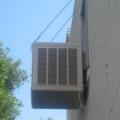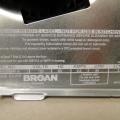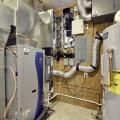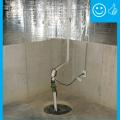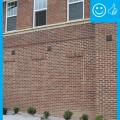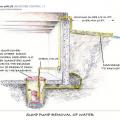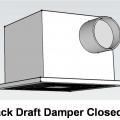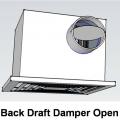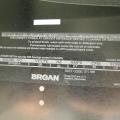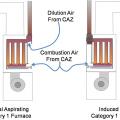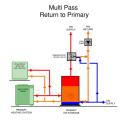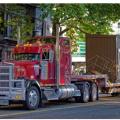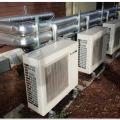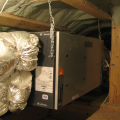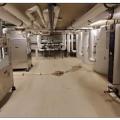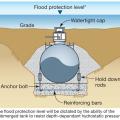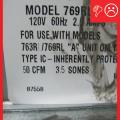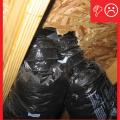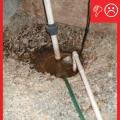Showing results 1 - 96 of 96
Right: dedicated tank connections for HPWH inlet and outlet provide hydraulic separation
These schematics illustrate temporary deployment locations for probes during the commissioning process; these probes connect to smartphone commissioning applications.
A central heat pump water heating system with a parallel loop tank temperature maintenance configuration uses a multi pass heat pump water heater to provide all the heat for hot water circulation temperature maintenance.
A central heat pump water heating system with a parallel loop tank temperature maintenance configuration uses a multi-pass heat pump water heater to provide all the heat for hot water circulation temperature maintenance
A central heat pump water heating system with a temperature maintenance swing tank configuration uses the water from the primary storage tank to provide most of the heat for hot water circulation temperature maintenance
A direct-vent sealed-combustion furnace has dedicated pipes for combustion air and exhaust
A flow grid is inserted into the filter grille/slot to directly measure airflow.
A fuel tank should be anchored with ground anchors designed for site conditions to maintain secure connection to its base in a flood or earthquake
A nitrogen pressure test was completed on this ductless mini-split heat pump using a digital manifold gauge.
A passive flow hood is used to measure the flow rate of air that passes through a ceiling-mounted exhaust fan
A static pressure measurement is taken on this air handler using probes on the supply and return sides of the fan.
A vacuum decay test is performed on this ductless mini-split heat pump using a digital micron gauge for accurate measurement; a deep vacuum is achieved quickly by using large diameter, vacuum-rated hoses, and removing valve cores
At the outlet of the dryer exhaust duct, install a hooded vent with a louvered damper
Back-draft damper still has a piece of tape that prevented it from rattling during shipping
Because flue temperatures are cool, intake and exhaust ducts on a Category 4 direct-vent sealed-combustion condensing furnace can be made of PVC
Central heat pump water heaters like this fully packaged system provide efficient, reliable domestic hot water for multifamily buildings; storage tanks are within the enclosure, and the heat pump is seen just outside.
Clothes dryers vented directly to outdoors, except for ventless dryers equipped with a condensate drain
Dryer exhaust duct should vent directly to the exterior via a smooth, rigid metal duct
Dryer vent is run vertical with a 90 degree bend and does not vent to the outside
Fan CFM rating is higher than the requirement increasing the likelihood that it will meet the performance level once installed
Fan CFM rating is higher than the requirement increasing the likelihood that it will meet the performance level once installed
Fans from seperate dwellings exhausted together without back-draft dampers and not sealed
Fuel tank is elevated above flood waters and anchored to supporting frame
Fuel tank is elevated above flood waters on a base of structural fill and anchored to the concrete pad
Furnaces, boilers, and water heaters located within the home’s pressure boundary are mechanically drafted or direct-vented
Improperly installed fuel tanks can break free from attachments under the force of flood waters, risking broken fuel lines which could cause fire or explosion. Here, the tank is tethered only by the gas piping, which is not designed to perform this functi
Indoor measurement of a whole house mechanical ventilation system with a pressure balancing flowhood provides a sheltered location for measuring airflow
Most residential heat pumps are installed incorrectly and with energy-wasting faults.
National Fuel Gas Code (NFPA 2012) identifies four categories for combustion furnaces and water heaters based on combustion type (sealed or unsealed) and vent pipe temperature
Packing tape has been removed and damper will be able to function properly once fan is installed
Quality installation and commissioning are critical to optimizing heat pump performance.
Right - The exhaust duct has been mechanically fastened and sealed with mastic.
Right - The exhaust vent duct terminates to the outdoors with a vent cover that has been properly caulked and covered with a metal pest screen.
Right - The home’s ground source heat pump preheats water for the air source heat pump water heater.
Right - This evaporative cooler is wall mounted to reduce leak effects and allow for ease of maintenance.
Right - This manufacturer's label shows a CFM higher than the requirement, increasing the likelihood that it will meet the performance level once installed.
Right – A utility room provides adequate space for the home’s mechanical systems and electronic smart home monitoring equipment.
Right: Maintenance valves are installed at the inlet and outlet of this central heat pump water heater
Separate exhaust fans can share a common exhaust if each exhaust fan is equipped with a back-draft damper to prevent cross contamination
Seperate dwellings with their own seperate exhaust terminations
The back-draft damper on this exhaust fan is closed to prevent cross contamination
The back-draft damper on this exhaust fan is open when the exhaust fan is operating
The back-draft damper open when the fan is actively exhausting and closes when the fan is off
The ENERGY STAR logo on the manufacturer’s label indicates this is an ENERGY STAR qualifying exhaust fan
The manufacturer’s label found on this exhaust fan housing shows a sone rating of 1.0
The natural draft and induced draft furnace are both Category I appliances that receive combustion air from the combustion appliance zone
The raised hood at the base of the vent stack on this water heater shows that it is an atmospheric vented gas water heater
This central heat pump water heating system with a hot water circulation loop that returns to the primary storage tank relies on a single pass heat pump to provide both primary DHW heating and hot water circulation temperature maintenance
This central heat pump water heating system with a hot water circulation loop that returns to the primary storage tank relies on a multi pass heat pump to provide both primary DHW heating and hot water circulation temperature maintenance
This fuel tank sits at grade but is anchored through its concrete base to the ground beneath with helical earth anchors
This fully packaged/skid-mounted central heat pump water heating system was shipped to the building on a truck and craned into location
This fully specified central heat pump water heating system has four individual outdoor heat pump units plumbed in parallel to indoor storage tanks
This HRV, installed in a conditioned attic, provides balanced ventilation to the whole home
This mechanical room contains both the storage tanks (right) and heat pumps (left) of a central heat pump water heating system
This packaged central heat pump water heating system has the heat pumps on the exterior of the blue enclosure, and the storage tanks, temperature maintenance equipment, mixing valve, and control modules on the inside
This retrofit central heat pump water heater system utilizes the existing water heater as a swing tank to provide temperature maintenance for the hot water circulation loop
This underground fuel tank is anchored to a concrete base to resist buoyancy forces
Types of heat pump water heaters commonly used in central heat pump water heating systems include single pass units, multi pass units, and integrated units
Wrong - the CFM rating may not meet the performance specification once installed, and the sone rating is too high.
Wrong - Two exhaust terminations are joined in a roughly cut, restrictive hole that is not air sealed.
Wrong: HPWH inlet and outlet are piped to mixing valve inlet and DCW make up, driving erratic HPWH and mixing valve behavior
Wrong: The exhaust air from one heat pump water heater is blowing into the intake of the heat pump water heater next to it
